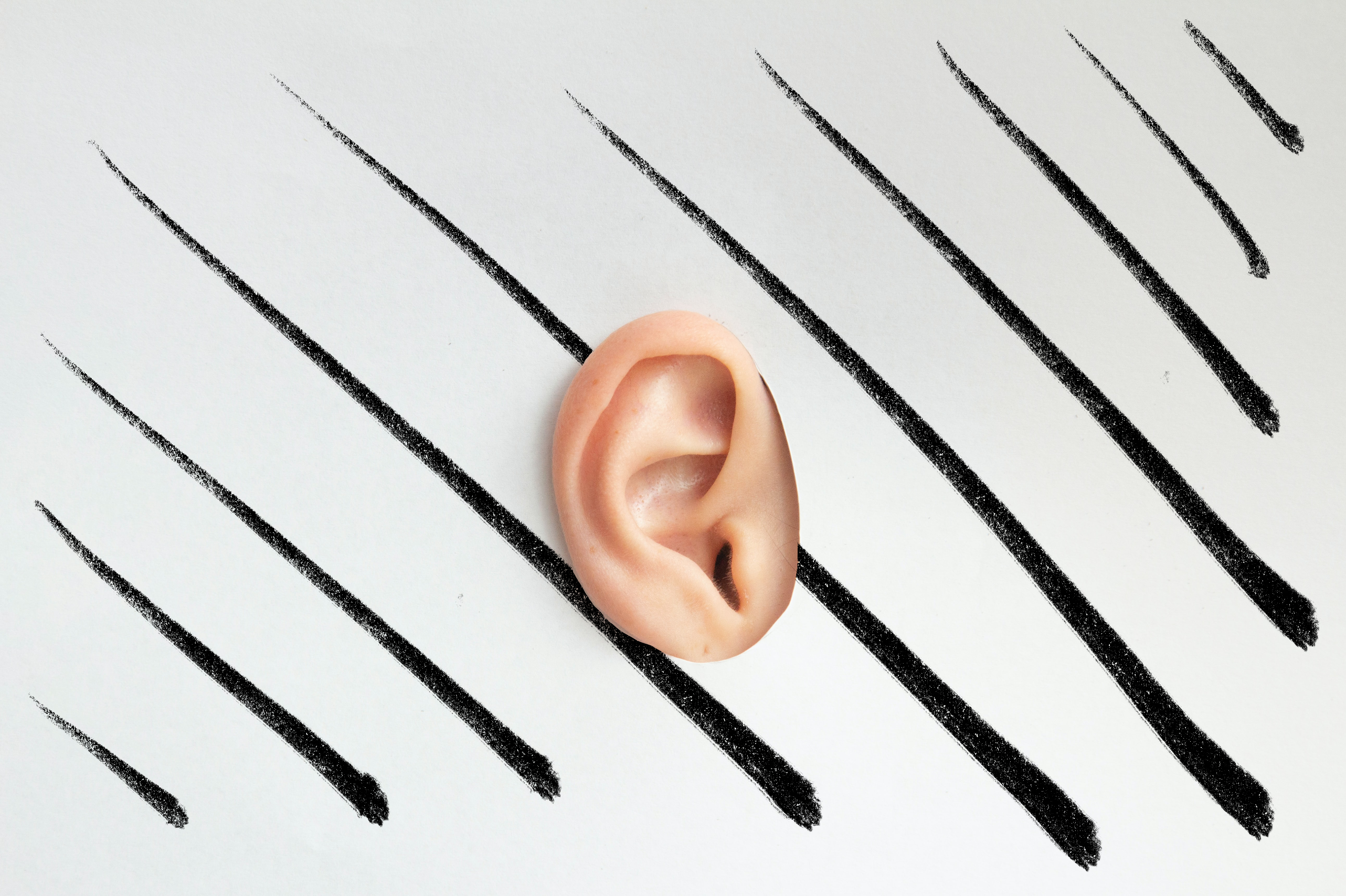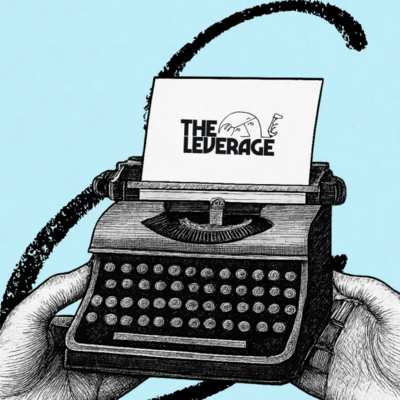
Sponsored By Axios HQ
Make your team's writing clear and smart with Axios HQ. It’s intuitive software that will help you and your team write in Axios’s smart brevity style designed to allow you to think more clearly, communicate more crisply, and send focused, effective updates.
Fortune 100s and startups alike use Axios HQ to craft smart updates that distill essential information in half the time. Writing is thinking, and Axios HQ can help you do both better:
Hi all, I have a special treat this week. I’ve teamed up with Dan Runcie, who writes the wonderful newsletter Trapital about the business of Hip-Hop. His analysis of the music industry is elite and the essays he has published are some of my favorite reads. Today we are teaming up to write about a company that overlaps our interests—Spotify. If you want to subscribe his newsletter you can click here
Within 24 hours of employment at Pandora Radio, Evan knew the company was destined for doom. It was his first internship in 2016 in the Bay Area, with a role on the corporate strategy team. At the time, executives would stride around the office, lauding Pandora’s superior music recommendation capabilities and long-time leadership in the space. There was some panic over Spotify, but Pandora felt it could respond well. However, as Evan walked over to his desk he saw a C-suite executive happily bopping his head, Spotify’s desktop app open on his computer. When Evan later asked that executive why he was on Spotify, he responded simply, “It is more convenient.” Note: Yikes.
Spotify has been the dominant global music streaming platform. Through a combination of convenience, partnerships with rights holders, and on-demand listening, it outlasted music piracy and beat legacy platforms like iTunes. It has built the business that saved the music industry. In October 2021, the company had 381 million monthly active users and was growing 19% year over year. Its users reside from Birmingham to Bangladesh, with the service available in around 180 countries. The business is cash flow positive and is inching ever closer to profitability.
We could write a piece about how the company has fueled user growth through telecom and consumer packaged goods partnerships. We could also examine the longer term effects of artists like Neil Young and Joni Mitchell pulling their music from the platform due to Spotify’s deal with The Joe Rogan Experience. Or why its push into concert ticketing couldn’t challenge Live Nation or AEG Presents. But what is fascinating to us is a different question: in a market with multiple credible alternatives, what force is keeping Spotify on top?
Our thesis is simple: Spotify wins because it has what matters most—attention. Spotify is the primary distribution tool for the biggest artists in the world. It has amplified attention for genres that were held back before the streaming era. The company is now on a mission to capture attention for all forms of audio. It is the attention king. How it wields its power is what we’ll break down today.
How Spotify helped artists gain more attention
Spotify is often criticized for giving too much attention to the major stars. (Who remembers the infamous Drake takeover when Scorpion dropped?) But Spotify reflects consumer preferences, and consumers gravitate toward the biggest names.
In 2021, Spotify announced that 13,400 artists’ catalogs generated royalties over $50,000. According to Music Business Worldwide, that represents 0.2% of the seven million artists who have ever distributed music on the platform. It’s a provoking stat, but remember—Adele releases her art on the same platforms as inactive hobbyists! Music streaming’s power laws are inevitable.
These dynamics exist in most forms of entertainment. In soccer, 0.05% of the 270 million people worldwide who play on organized teams are professionals. The best-selling author in the world, James Patterson, earns nearly $100 million annually, while the average author is lucky to recoup their $10,000 book advance.
Is it harder for artists who once earned a lot from CD sales to earn those same royalties from Spotify and its competitors? Yes. A fan would have to generate 1,250 streams to match what Billboard considers the equivalent of a CD sale. However, these comparisons don’t account for the ways that streaming has benefitted other types of artists, addressed inefficiencies of the CD era, or grew the overall economic pie. Let’s walk through each of these in more detail.
Rise of Overlooked Genres
First, streaming democratized both music distribution and access, which accelerated growth for genres and regions that had less influence before. Hip-hop artists and Latin music stars became more powerful in the Spotify era. Three of Spotify’s four most-followed playlists are RapCaviar (14.3 million as of January 2022), Viva Latino (11.5 million), and Baila Reggaeton (10.4 million). Spotify has also helped many American artists build fanbases across the world, which makes it easier to generate global revenue from live performances. Now that fans of all backgrounds have more influence, it shifts the perception of which music is considered mainstream.
The CD era peaked in 2000. That year, *NSYNC dropped No Strings Attached and sold 2.4 million copies in its first week, a record that stood for 15 years. Dan still remembers the day that album was released. Several of his classmates were late to school because their parents drove them to Sam Goody on a Tuesday morning to buy the album!
Meanwhile, DMX—the biggest rapper at the time—had released his highest-selling album a few months earlier, …And Then There Was X. But did the parents of the average teenage DMX fan take their kid out of school to buy that album? Hell no. *NSYNC’s album sold over three times the number that DMX’s did. *NSYNC was more popular than X, sure, but three times as popular? That’s a stretch. In the streaming era, Drake has yet to outsell Taylor Swift but the gap is much closer. It’s more dependent on true fandom and less dependent on externalities.
More Efficient Economics for Consumers
Second, the CD era forced people to buy a $20 product when many fans only listened to three of the songs after the first few listens. The Spotify era has its own filler content—bloated 20+ track albums and two-minute songs to boost streams—but consumers don’t bear that additional cost. Plus, don’t get us started on the infamous double albums! For every classic like OutKast’s Speakerboxxx/The Love Below, there were dozens of double albums by some of our favorite rappers that were clearly cash grabs.
Growing the Overall Pie
Third, today’s stars may earn fewer royalties from recorded music, but they likely earn more in total when including live performances, merchandise, and other revenue streams that have grown in the streaming era. The billionaire musicians were fewer and farther between in the CD era. Lil Wayne made $18 million in 2009 when he was the “best rapper alive,” but he grossed nowhere near the $100 million that Travis Scott earned in 2020.
In fairness to Spotify, the company pays out 70% of its revenue to the rights holders. If an artist is unsigned and owns all their rights, the payouts go directly to that artist. But if an artist has signed a more standard deal, then the large portion goes to the record labels and publishing companies, who pay artists according to their deals. Some of the criticism aimed at Spotify has more to do with those deals than it does with the streaming service.
The company will continue to reward the biggest stars, not because it wants to, but because it more accurately reflects where music listeners and the music industry have given most of their attention.
How Spotify leveraged its attention
Because so much of Spotify’s music revenue is paid out to powerful intermediaries, Spotify has long felt the itch to expand into audio-adjacent products. In 2015 it was concert tickets, and in 2016 it was merchandise. Both of these early experiments were reliant on third-party partnerships, leaving very little margin for Spotify. But in recent years, Spotify has been on an acquisition tear focused on non-music audio. From purchasing original content to experimenting with new formats, the company has aggressively pursued new modalities. The goal is to leverage the giant ocean of attention commanded by its app into a giant improvement in gross margins.
Note: The audio-adjacent strategy wasn’t new. When Evan worked at Pandora Radio, the company bought Ticketfly, a TicketMaster competitor, for $450 million. It went…not great. Pandora sold Ticketfly less than two years later for only $200 million. Ouch.
Spotify has $3.5 billion earmarked to continue expanding to podcasting and more. When listeners stream music on Spotify, the company gives 70 cents of every dollar to the rights holders. But podcasts have zero marginal cost to reach more users. The more users who listen, the more quickly Spotify can recoup its podcast investment and increase overall gross margins. Plus, it gives Spotify more leverage in its negotiation with the major record labels.
To date, the company spent hundreds of millions on exclusive content licensing deals for shows like The Joe Rogan Experience and Call Her Daddy. Spotify has also purchased major podcasting studios like Gimlet (over $200 million) and The Ringer (up to $196 million). To capture the long-tail of podcasters, it purchased Anchor for around $150 million. And to maximize podcast advertising, it bought Megaphone for $235 million.
Spotify is now the #1 podcast player in the U.S. with podcasting driving new subscriber growth. But this is happening while the app is still not designed for podcasting! It’s a music app jury-rigged to include podcasts. The podcasting tab is hidden at the bottom, and downloading new episodes is not convenient. But Spotify has still won on this front thanks to its existing user base and exclusive content.
Spotify’s other audio formats are less developed than podcasting, but will likely get some investment from that $3.5 billion earmarked. The two big areas are audiobooks and live audio.
In November 2021, Spotify bought the audiobook company Findaway for an undisclosed price. This service is like Anchor for audiobooks, distributing them to various platforms. It’s a natural expansion after podcasts. Many audiobook platforms are built off of one-off purchases, but Audible and others with weekly subscriptions are a potential model for Spotify to follow.
Spotify’s live audio strategy is even more nascent. Remember Clubhouse? At the peak of its U.S. popularity, Spotify purchased the development team of a competitor called Locker Room (now Greenroom). It has not gone as well as they likely hoped. The app has fizzled in a manner similar to Clubhouse’s recent woes. Greenroom has been ranking around #480 for the last few weeks in social networking apps according to App Annie data (login required). It is unclear to us whether the live audio chat rooms works as a standalone feature, and whether Spotify will crack this difficult nut.
Podcasting will continue to be Spotify’s big focus, but the medium still has its challenges capturing attention in the future (more on that in a minute). At the same time, emerging music technologies have gotten tremendous buzz. It won’t be long until Spotify makes an aggressive push there.
The future of music will complement Spotify
It seems that for every problem a technology company faces, a Bored Ape Yacht Club Twitter avatar believes that Web3 will fix it. Spotify is no different. Some experts believe that NFTs will fix Spotify’s shortcomings. However, it’s much more likely that NFTs will increase Spotify’s power.
Music NFTs and tokens emerged at an exciting time. Artists can offer their superfans more unique products, better segment their fanbase, and grow a community with their biggest supporters. In the near future, some artists may earn a majority of their revenue from Web3-based platforms.
But these platforms won’t replace Spotify or fix the power laws and monetization dynamics that Spotify is often criticized for. Instead, they will add to the artist’s overall plan in the same way that a VIP “meet and greet” ticket can complement a general admission seat. Spotify will stand to command the attention of the masses and will find a way to get its pound of NFT flesh.
Music is a medium that thrives on network effects. Fans don’t just value their individual relationships with a song or artists. They value the access music gives them to the circles they want to be included in, the status they want to maintain, and the memories they want to re-live.
Even if music NFT ownership becomes mainstream, it won’t replace the human desire to catch up on the song of the summer. It won’t stop people from wanting to stream Mariah Carey’s “All I Want For Christmas Is You” every holiday season. Monoculture may not be as strong as it was during Beatle-mania, but it’s not going away.
But as Web2 titans embrace the future, Spotify will likely take its swing at music-based NFTs and tokens. No company has better data on which fans would be best to target for an artist’s high-value products.
Historically, Spotify is more likely to acquire than build from scratch. Companies like Audius or Royal could be targets. Both allow fans and artists to earn upside in both the artist’s revenue and the platforms themselves. Disruptors often get acquired by the same companies they try to disrupt.
With NFTs unlikely to solve all of music’s woes, most of Spotify’s leverage is bound to come from the existing landscape.
Attention concerns for future growth
Spotify has acquired its way to impressive growth in podcasting, but the medium has two challenges that can’t be solved by money alone.
First, podcasting hasn’t produced a big new hit in years. Many listeners are happy listening to the same shows they’ve listened to for years. Podcasting struggles with discoverability to begin with, and Spotify’s self-produced shows haven’t been as successful. Spotify can try to acquire more established podcasters and shows, but there are only so many podcasts at massive scale, and many companies want to acquire them.
Second, Gen Z doesn’t listen to podcasts as much as millennials and Gen Xers do. Unless Spotify has a product to compete with TikTok, it may continue to struggle with younger listeners.
But let’s assume Spotify’s podcast strategy works. The company would gain leverage to negotiate better rates with the major record labels and publishers. The majors have worked their own game to partner with companies like TikTok, Roblox, Peloton, and more. Here’s what Dan wrote in Trapital in Inside Universal, Sony, and Warner’s Arms Race For Your Attention:
“Streaming may have saved the industry, but labels don’t want to rely solely on Spotify, Apple, and Amazon to run their businesses. If labels become overly dependent on the tech giants, they will get squeezed on margins when it’s time to renegotiate licensing deals... Labels and streaming services need each other, but both are in a fierce tug-of-war to prove that they don’t.”
The other wild card for Spotify is the growth of revenue from independent artists. The sector grew 27% in 2020, which is faster than the 20% growth of the overall industry. It’s an important sector for Spotify to foster, but the dynamic still works in the major record label’s favor. Many successful indie artists will gravitate towards the major labels, and some successful independent labels will get acquired by the major record labels. The major record label’s acquisition spree may be just as impressive as Spotify’s.
Spotify, like most streaming services, will likely increase its rates in its most established markets. Its pricing power may not be as high as Netflix’s, but it still has room to increase rates higher than the $9.99 per month default that’s been standard for over a decade. Increased rates won’t change its revenue share or capture any more attention, but it will give Spotify more cash to invest in long-term growth.
The quest to own the ear
Some of the most interesting companies to study are those that sell moments of cultural influence. Despite the emotional power that they capture, they are unable to translate the results of the heart to results on the income statement. Book publishers, movie studios, record labels—all produce products that are deeply important to the human experience, and yet they are unable to produce consistent profit. Perhaps it is because so much of the value isn’t inherently monetary, so it is difficult to translate that into fiscal results. Spotify’s music business is the same. A 70% cost of goods sold business likely won’t hit a $100 billion valuation.
But Spotify works because of the artists and podcasters who top their respective charts. They capture enough attention to make up for the ones that struggle. Similarly, Spotify’s goal has been to find its own products that will generate the outsized returns to make up for the rest.
Spotify didn’t stick to one creative modality—it broadened its scope to own a major category. It delivered what Pandora could not. It will soon “own the ear” for nearly 400 million people worldwide. It has big dreams to reach even more people, and it can get there by investing in its own attention.
This essay was a collaboration by Evan Armstrong of Napkin Math and Dan Runcie of Trapital. Trapital is a free weekly newsletter that will keep you posted on the latest trends in hip-hop, music, and entertainment. Sign up here to get it in your inbox every Monday.
The Only Subscription
You Need to
Stay at the
Edge of AI
The essential toolkit for those shaping the future
"This might be the best value you
can get from an AI subscription."
- Jay S.
Join 100,000+ leaders, builders, and innovators

Email address
Already have an account? Sign in
What is included in a subscription?
Daily insights from AI pioneers + early access to powerful AI tools










Comments
Don't have an account? Sign up!